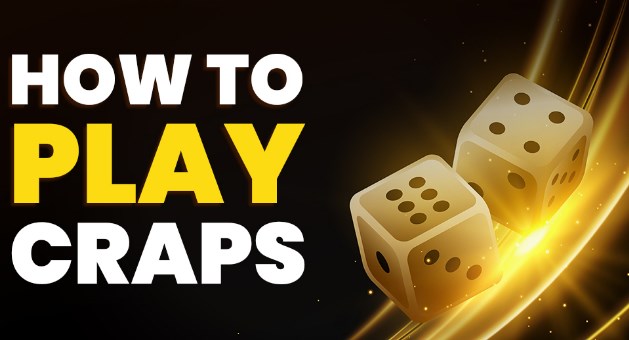Basic information
It isn’t as difficult as you might think to play craps. Make a little bet on the pass line/pass line the first time you visit the table. The pass line is the border that runs around the table’s perimeter and forms the table’s design.
Each player throws two dice per turn. The shooter is the participant who throws the dice. Other players at the plateau may place bets against the shooter (the player who rolls the dice) or on him. The game is played in rounds. The next round starts with the first printing of a new band or the come-out roll. The second round is over when you take out a point or seven.
The player must place the minimum bet on the Pass or don’t pass lines. These are often called “Winning” or “No Win.” The shooter is the player who follows the shooter. The shooter can choose to shoot or pass the dice. Passed dice will continue to travel around the table until someone wishes to throw them.
Pass line betting is a wager on the first roll of a dice. It wins if it is 7 or 11. Also known as the come-out roll, the pass line bet can be placed on the roll’s outcome. The come-out registration is a winner if 7 or 11 are rolled. If 2, 3, or 12 have proceeded, it is deemed craps and loses.
Any number other than the 7 establishes a point line pass. No one wins or loses. The shooter aims to redraw the same number before rolling a 7. You win if you get the pass line point before it goes 7. If you miss a 7, you will lose your hand. The dice are passed to another player who is the new shooter.
Craps Betting
He gets the point if the shooter fails to get a 7, 11, or 10. If he wins, you place another small amount of money beside the original bet. This extra bet is known as an odds bet, free-odds wager, or simply an odds bet. A bet right is almost twice the original bet.
The majority of gambling in casinos pays less than the odds of winning. If you win, the original bet (a bet that you didn’t pass-line) will be paid. However, the odds bet/bet odds are paid as true-odds money with the percentage equivalent to real winning chances. Even if you win more, this bet is still worth it because the house edge (when the house pays the money as true odds) is always zero. This point makes it very profitable.
This bet is not in the layout of the craps tables. It is a great bet but not a good one for the casino.
You can play with a pass-line wager and then add free odds if you get the point. This versatile strategy can be used constantly at the table with great success. You’ll be surrounded by other shooters, making it even more enjoyable.
To come up, you can bet on the pass line/pass line. You can add additional odds or bets to the shooter when they get one point. There are more than 120 types of craps bets that you can make, but this page will help you get started quickly.
Rules
After you have placed your initial wager, the stickman (or casino representative) will give the dice to the next shooter.
The shooter will throw the dice and take a roll out / come back registration, which is the setpoint for all the rounds.
It is considered “crap” if the roll is 2, 3, or 12. The players will lose their pass-line wagers. A run that scores 7 or 11 points is considered a “natural.” The betting line pass/win bets win, and those not passing/don’t give loose.
If the output is the numbers 4, 5, 6, 8, 9, or 10, the number in question becomes “point,” and the roll ends. Managers placed the word “On” on the point number button, so everyone at the table knew what it was.
The shooter must keep throwing the dice until they get the point. The betting line passes/Pass bets if you score at the end win. The shooter who rolls seven is called a “seven out,” and the pass line loses. A seven-out is the end of the round—the dice pass (in a clockwise sense) to the next shooter.
How to play Craps
Any of the following can be placed on your table:
- Pass Line Bets
- Do not place bets on the Line.
- Place your bet
- Field
- Big-6 betting bets
- Big-8 betting bets
Pass Line Bets: This is the total bet in craps. It’s also known as the “line of win/loss” in certain countries. Pass line bets are won immediately if the come-out roll equals 7 or 11. You are in a “crapping out” chance if it equals 2, 3, or 12. If you roll any value, it establishes a point. You win the bet if that point is moved again before you roll a seven. If you roll a moment and pull out a seven, your chance is canceled ( “seven out”). Pass line bets pay the same amount as wagered.
Pass Line Bet is not the Don’t Pass Line bet. It loses if it comes out with a 7 or 11 and wins if it comes out with a 2 or 3. A 12 is a draw. The player does not lose if it draws a 2 or 3. This depends on where the casino is located. The interest (the word “BAR,” printed on Craps tables, means “depart/standoff”) is used to ensure that the casino gets an allowance for home regardless of whether players bet on Pass or No pass.
If you set a point, and then that point is searched again, the betting Do Not Pass Line / Don’t pass line bet loses. If the search takes seven moments, betting Don’t Pass Line / Don’t pass wins. Two methods can be used to calculate this bet’s probability and the house edge.
Do not Pass is sometimes called “play on the dark side,” Some players find it offensive or taboo because it goes against the rules.
Points before Pass / Pass odds If the point returns before you see a 7, the additional bet is won. This is true odds of 2:1 if it is 4 or 10, 3 or 2, 5 to 9, 6 to 5, and 6 to 5 if it is 6 or 8.
Many casinos offer “points or advantage” / odds of 3-4X. The point determines the maximum allowed odds on a bet. For example, three times if the issue was 4-10, four if 5-9 or 9, five if 6-8 or 8, and five if 6- or 8. This rule simplifies the calculation for profit. A bet with the maximum likelihood/maximum odds placed on a table of 3-4X will always pay six times the Pass Line/Pass Line value, regardless of whether the point was taken.
Playing pass odds on a minimum line will decrease the house edge, just like betting on probabilities/odds. The house advantage is as soft as possible when the odds bet max / maximum are placed on an odds bet that places maximum or maximum odds on a minimum or leading pass line.
Odds do not pass / Do no pass odds: A player who plays not to give may be more likely to place chips below the Line of not dying. Bets paid true odds if you score a seven rather than the desired point.
Come bet: You play a come betting in two rounds, similar to a Pass Line or Pass Line bet. The winner is the player who gets a 7 or 11 in their first round. You lose if you leave a 2, 3, or 12 in the first round. The manager will move the come wager a box representing the number who took your shot if you score a 4, 5, 6, 8, or 9 out of 10.
This number is the come-point bet, and the player can add to your odds bet. The come bet odds charge is slightly higher than the original bet to distinguish it. Suppose the shooter rolls a seven before the number, the second-round wins. The chance is lost if the number comes before seven. The Pass Line / Pass Line bet will play in a come-out roll. However, traditionally the odds of the game would not enter unless the manager was informed otherwise.
Only after a point is established come bets cannot be placed. The come bet allows any player to be in a position where they have a come wager (probably with probabilities or odds). The next enrollment will be a come-out roll. In this scenario, we assume that the come-out roll will not cover odds bets on come. If a tirade rolls a 7, all players who have actively come bets will lose their initial chance. However, the money can be retrieved from the odds/odd money. If the shooter rolls a point equivalent to win-eat, lose-bets odds, the player can inform the manager that he wants his odds to fall. Both players will lose if they leave a 7.
Don’t come bet: A don’t come bet can be played in 2 rounds. A 2 or 3 in round 1 wins. You lose if you get a 7 and 11. A 12 is a draw. The player can then withdraw his bet. However, if the shooter leaves a 4, 5, 6, 8, 9, or 10, the chance will be canceled, and the player will be moved into the cell that contains the number that took the shot if the shooter rolls seven before the point is not the second-round wins.
You can only place do not come bets before the come-out roll. Once you have established a point, it is possible to make them after that roll. A chance that does not arrive can be placed as a Baseline bet. In this instance, the manager (not you) places the odds wager on the top of the box if there is little.


